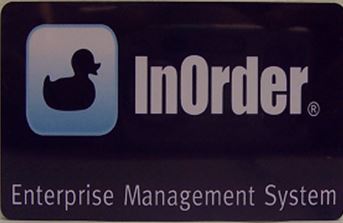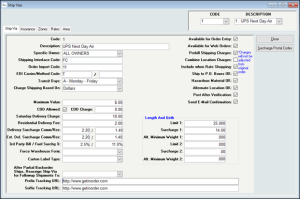5 eCommerce Practices to Avoid on Your eCommerce Web Store
 Businesses are making it easier and more pleasant for shoppers to buy from them, so you know that exceptional service, top quality items, and competitive prices are critical. They can determine whether you get sales, good references, and future customers.
Businesses are making it easier and more pleasant for shoppers to buy from them, so you know that exceptional service, top quality items, and competitive prices are critical. They can determine whether you get sales, good references, and future customers.
Here are five reasons eCommerce shoppers avoid online stores, and insights on making your business more attractive to them.
- Offer Only Common Products and Limited Choices – According to a study in 2016 by UPS, shoppers prefer to begin searching on marketplaces for product selection and availability. While large selection is important (and the reason many shoppers begin searching at a marketplace), unique products are also important and shoppers will seek them out, rather than settling for common and easy to find items.
- Don’t Provide Reviews – Reviews can increase sales by steering and bolstering confidence as shoppers are considering their purchases. Additionally, it is important to know what your customers think of your products because then you know how you can improve your offerings, and where you should consider raising or lowering prices. If your ERP system provides the capability, you can enable live crowd sourcing so your customers can provide feedback for products. You can even provide online forums or Q&A sections. After each purchase, ask for a review of both the shopping experience and the product. This lets the customer know that you still care even after the sale. And when your customers take the time to send their valuable opinions, make sure to review and display them as soon as possible.
- Charge High Pricing – Pricing is one of the most important considerations for today’s shopper. Even mobile device users compare prices and search for retail coupons. These shoppers enroll in membership/loyalty programs, and check promotions on social media, following retailers for deals, coupons, and holiday specials.
- Charge High Shipping Costs – Free shipping is very appealing to shoppers, and many will abandon their carts if shipping costs are too high. One successful approach is to offer shipping subscriptions. With this option, customers are much more likely to place frequent orders instead of waiting to buy because they want to make shipping worthwhile.
- Devise Complicated Return policies – As can be expected with online purchases, returns may be higher. But don’t make your return procedures so complicated that shoppers won’t buy from you. Shoppers are willing to drop off their returns at carrier locations or take their returns to a physical store. In-store return options provide opportunities for retailers to make these experiences easy for shoppers, who might make additional purchases while making their returns. If you have a physical store and customers are willing to visit, use this as an opportunity to build better relationships with them.
From simple return policies, to unique items and competitive prices, today’s shoppers expect the best, and if you don’t provide what they expect, they’ll find another eCommerce site that will.
Contact us for a demo to get your eCommerce InOrder.
What do eCommerce Shoppers Want?
Knowing how your customers shop can mean the difference between finding your products or your competitors’ products. The study by UPS “Pulse of the Online Shopper” explores shopping habits of customers, including where they shop, how they shop, research, delivery preferences, and returns. Volume 4 explores shoppers’ product preferences, pricing importance, as well as the importance of membership/loyalty programs, free shipping, and social media. Here are several helpful insights to what is important to eCommerce shoppers.
- While large selection is important (and the reason many shoppers begin searching at a marketplace), unique products are so important that shoppers will seek them out, working harder to find them, rather than settling for common and easy to find items.
- Pricing is one of the most important considerations for today’s shopper. Even mobile device users compare prices and search for retail coupons. These shoppers enroll in membership/loyalty programs, and check promotions on social media, following retailers for deals, coupons, and holiday specials.
- According to the study, enrollment in membership/loyalty programs is at its highest level in 3 years. Top benefits of these programs include free shipping, special discounts, free returns, and loyalty points/dollars to use on a future purchase.
- Of all membership/loyalty program benefits listed, free shipping was the most appealing to members. While the importance of free shipping has declined over the past couple of years, many shoppers abandon their carts because of shipping costs.
This link provides a download request for Volume 1. Use this valuable information to help make decisions for winning these shoppers. And, in doing so, grow your business.
Contact us for a demo of how InOrder can help you implement the features so many shoppers demand.
Helpful Articles for Your Business
Advice for Catalog Marketing from a 40-year catalog marketing veteran.
Many retailers didn’t offer a better mobile shopping experience, despite Cyber Monday’s mobile sales. Which gender dominates the sport of shopping? Check out these Retail Predictions for 2018.
Read this article for a full list of marketing channels all marketers should know how to use, including some “old school” channels that have been proven successful over and over.
This interesting article discusses three customer service trends for 2018.
When your customers visit your website, do they know it’s secure? This article from Google explains how Chrome will display secure https sites as secure, vs. “unsecure” http sites beginning July 2018. InOrder customers can check InOvation (the publication for InOrder customers) for easy steps to implement this sooner.
Offer Gift Cards for Convenience and Profitability
 Gift cards have been used for a long time, and for several good reasons: They’re convenient for customers and profitable for businesses. They provide privacy and flexibility, they get your brand in front of current customers, they attract new customers, and they can increase customer loyalty.
Gift cards have been used for a long time, and for several good reasons: They’re convenient for customers and profitable for businesses. They provide privacy and flexibility, they get your brand in front of current customers, they attract new customers, and they can increase customer loyalty.
Through traditional gift-giving, recipients may visit stores they might not otherwise visit. But gift cards are not just for gift-giving – they are evolving. Shoppers often buy gift cards for themselves for secure online shopping or to take advantage of discounts and rewards. And all shoppers with gift cards offer the possibility of spending more than the amount of the gift card. Smart businesses are thinking of even more ways for gift cards to contribute to their bottom lines – such as using them for store credit, rebates, promotions, loyalty programs, or even marketing them to businesses to use as employee awards.
Gift cards can be physical or digital. Your customers may download them immediately after placing the order, or you may send them as an attachment in an Email.
With InOrder, you can even refund a gift card to a specific customer, who may or may not be the same customer who originally bought the gift card. This means you can be more flexible about gift card sales, and your customers can be more confident that their money is well spent. This function also enables lost gift cards to be re-issued by refunding to a customer’s account and using the credit to purchase a new gift card for the same balance.
For information about how to get your gift cards InOrder, contact sales@morsedata.com.
Maximize Shipping Recovery = Increase Profits with InOrder ERP
The Ship Via functionality within InOrder ERP is a favorite with our customers because it maximizes profits by managing rates and fees to make sure shipping expenses are accurately recovered.
Each shipping service is set up with rates, which can be conveniently uploaded from shippers (FedEx, UPS, USPS etc.) Insurance charges may also be identified/imported, along with zones that represent the distance from your shipping location to the shipping destination, and postal code areas.
Shipping with InOrder ERP is more than who ships your orders and what they charge. Here are highlights of how you can use the InOrder Ship Via functionality to accurately recover your shipping expenses:
- Manage all surcharges – COD Fees, Fuel Surcharge percentage, Residential, commercial, 3rd party billing percentage, and Saturday delivery are just some of the shipping expenses you can manage through InOrder.
- Set up Insurance Fees based on invoice totals (example: invoice totals $1.00 – $10.00 charges .50 Insurance).
- Charge Shipping Based on: Weight Per Carton, Dollars, Dollars Per Carton, Quantity, and Weight
- Identify shippers that accept hazardous materials.
- Supports the DIM Factor used by major carriers. This is used to more effectively estimate shipping rates that compute shipping based on weight per carton. When this feature is used, InOrder uses the item dimensions (height, weight, length) to determine appropriate cartons. InOrder calculates the carton’s dimensional weight and compares it to the merchandise weight, and the shipping charges are computed based off the greater of the merchandise weight and the dim weight. Then the shipping charges for each carton in the shipment are summed to calculate the estimated shipping charges for the shipment.
- Reference EDI Carriers by their SCAC value and shipping method.
- Route items to a separate shipment to bypass shipping if they are electronic distribution only (no physical shipment required).
- Track order shipments, and send Email confirmation of shipment according to the method in which the order is shipped. This is useful for orders that are not delivered, such as those picked up by customers.
Contact us for more information on maximizing your profits with InOrder’s Ship Via functionality.
Plan Your Inventory SKUs to Minimize Confusion
 When a co-worker’s PC needed repair, the vendor provided amazing service by promptly sending a technician who quickly replaced a part. After the part was replaced, a serial number had to be registered, and when it was completed, the new part did not work. Again, the vendor provided amazing service. A new part was immediately sent, the technician coordinated his arrival with delivery of the part, installed it the next day, and the serial number was registered. Again, the part did not work. This was repeated once more before it was finally realized that the culprit might be the serial number, which contained ambiguous characters. Not only that, but the font used made upper-case and lower-case of some letters look so similar that it was difficult to tell them apart. If the serial number had not been so problematic, the vendor might have saved significant expense in parts, shipping, and labor.
When a co-worker’s PC needed repair, the vendor provided amazing service by promptly sending a technician who quickly replaced a part. After the part was replaced, a serial number had to be registered, and when it was completed, the new part did not work. Again, the vendor provided amazing service. A new part was immediately sent, the technician coordinated his arrival with delivery of the part, installed it the next day, and the serial number was registered. Again, the part did not work. This was repeated once more before it was finally realized that the culprit might be the serial number, which contained ambiguous characters. Not only that, but the font used made upper-case and lower-case of some letters look so similar that it was difficult to tell them apart. If the serial number had not been so problematic, the vendor might have saved significant expense in parts, shipping, and labor.
This also holds true when designing item numbers and SKUs for your inventory. Knowledge and planning means you’re using your preferred numbering design without causing problems for yourself (and possibly your customers). Here are some guidelines to consider when designing your inventory numbering system:
- Special Characters – While using special characters might be a good practice for passwords, it’s not the case for inventory numbers. Some characters can be mistaken for programming functions and might not be interpreted correctly, and others can cause problems with searches. Examples include /, &, <, >, *, etc.
- Vendor Numbers – Don’t use the same numbers that your vendors use. Using this as a standard inventory numbering system risks high inventory item turnover, loss of item performance history, and an inconsistent numbering system when you change vendors or if you have multiple vendors for one part.
- Length – Make sure the length is not too long or too short. Stay within the length restrictions of your ERP system, but don’t make the numbers so short that the might be mistaken for a quantity. Using a mix of letters and numbers increases your item numbers while maintaining reasonable length and helping to identify them as item numbers.
- Empty Spaces –10+ spaces may cause problems with search results.
- Ambiguous Characters – Avoid characters that can be confused with each other. These include characters such as capital eye, lower-case L, zero, and capital oh. Depending on fonts, add Cc, Kk, Pp, Ss, t+, Ww, t+, Uu, Vv, Xx, Zz, and number one to the list of characters to mistrust.
Simply omitting certain characters from your numbering scheme can prevent frustration for you, your employees, and your customers. In some cases, it can even save you money.
Contact us for more information about getting your inventory InOrder.
Easy Return Policies Could Attract More eCommerce Customers
Most (if not all) eCommerce websites include a section with their return policies, which include details about returning items with or without receipts, which products can be returned and when, which products cannot be returned, and more. When I shop online, two options I find particularly appealing are the ability to return an item to the store, and free return shipping.
Free Return Shipping
Free Return Shipping could make a difference in where your customers shop. Customers want this. Free return shipping doesn’t mean customers will return everything they buy, but they’re trusting that your products are worth buying without seeing them or touching them first-hand. It assures them that you stand by your products and care enough to provide top-notch service. Shoppers prefer to shop at stores that offer free returns, so it could be a small price to attract more customers. If you offer this, be sure to promote it clearly so shoppers don’t miss it.
Return to Store
 This option is attractive to shoppers who actually prefer to take their returns to a physical store. It involves no shipping expense, it’s faster in some cases, it’s convenient, it provides immediate credit, and shoppers don’t have to walk out empty-handed if they want an exchange. This provides golden opportunities for retailers to make these experiences easy for shoppers, who might make additional purchases while making their returns. It can also create a positive experience and lead to future shopping.
This option is attractive to shoppers who actually prefer to take their returns to a physical store. It involves no shipping expense, it’s faster in some cases, it’s convenient, it provides immediate credit, and shoppers don’t have to walk out empty-handed if they want an exchange. This provides golden opportunities for retailers to make these experiences easy for shoppers, who might make additional purchases while making their returns. It can also create a positive experience and lead to future shopping.
If you offer either of these return options, be sure to promote them on your website – it might make a difference in where shoppers spend their money.
Contact us for more information about eCommerce solutions with InOrder.
Offer These Services to Attract More eCommerce Shoppers
Businesses are making it easier and easier for shoppers to buy from them. One service that has grown in popularity and value for both businesses and shoppers is the ability to buy online and pick up orders from the store. This has become a common option, with a focus on convenience and speed. When shoppers pick up their orders, they may not have time to continue shopping. Instead, they want the pickup process to be easy, efficient, and fast. Some businesses simply have the orders ready at a common checkout counter, while others may provide a dedicated pickup area. Another option is to reserve an item online and then check it out or try it on in the store. If you’re considering theses services for your customers, be sure to include all of the following qualities:
- Easy – Identify items that are available for this service so customers can find them in search results. When it’s time for pickup, make sure it’s easy to find your pickup counter, even if it’s in the back of the store. If shoppers must search for a pickup counter, they may very well get frustrated enough to avoid it in the future.
- Efficient – If customers wanted to go through the in-store shopping experience, they probably wouldn’t spend the time shopping online first. Don’t make them endure a lengthy process or long lines that include in-store shoppers. Instead, give them their orders quickly. If possible, designate a separate area to pick up online orders, where it will be easy to access and check out.
- Fast – If customers are in a hurry, they need to get their orders and go. When convenience is important and you meet that need, chances are they’ll be back.
 Another option that is gaining popularity is outside pickup service, which allows customers to remain in their cars while you bring their orders to them. This service may include filling shopping lists, packing items, and loading cars. It is especially valuable to people in a hurry, parents with a carload of kids, people for whom it is difficult to shop, emergency purchases, and last-minute gifts. People taking advantage of these services could even shop online more often, so be sure your customers know about these options if you make them available.
Another option that is gaining popularity is outside pickup service, which allows customers to remain in their cars while you bring their orders to them. This service may include filling shopping lists, packing items, and loading cars. It is especially valuable to people in a hurry, parents with a carload of kids, people for whom it is difficult to shop, emergency purchases, and last-minute gifts. People taking advantage of these services could even shop online more often, so be sure your customers know about these options if you make them available.
You can also make an app available for mobile shopping and pickup arrangements. Restaurants and grocers have offered these services for years, providing same-day delivery and having orders ready at a drive-through. Retailers are recognizing the value of these services for both themselves and their customers, and customers are embracing them.
Contact us for more information about eCommerce solutions with InOrder.
Helpful Articles for Your Business
 In its 2017 Pulse of the Online Shopper Study, UPS provides insights for attracting shoppers. As we’ve mentioned, access to customer service during checkout, searching, and browsing is important. Now you can see statistics. The results of this study are provided in a series of five volumes, including:
In its 2017 Pulse of the Online Shopper Study, UPS provides insights for attracting shoppers. As we’ve mentioned, access to customer service during checkout, searching, and browsing is important. Now you can see statistics. The results of this study are provided in a series of five volumes, including:
- Volume 1 – Digital Evolution
- Volume 2 – A Mobile Mindset
- Volume 3 – Channel Dynamics
- Volume 4 – Savvy Shoppers
- Volume 5 – Retail Fundamentals
This link provides a download request for Volume 1. Use this valuable information to help you make decisions for winning these shoppers. And, in doing so, grow your business.
If your business is concerned about PCI-DSS Compliance, read this article from the PCI Security Standards Council. It explains SSL/early TLS, its risks, and what to do to protect against its vulnerabilities.
Is it hard to find people willing to work in a warehouse? This article discusses using robots as a possible solution.
Love your product, listen to your customers, and care about their needs. This article provides these 3 tips for success in direct sales. All 3 also apply to eCommerce, wholesale, and so many other service-related activities.
Does Your ERP System Validate Address Data?
When you ship orders and don’t validate the shipping addresses, you risk delivery delays if an address is incorrect, the added cost of additional shipping expenses and operating costs to get it right, not to mention unhappy customers. If the product is perishable, you might even have to add the cost of replacement.
For example – A business shipped perishable goods to a customer who provided an inaccurate shipping address. This, of course, delayed delivery of the order. Since the order was perishable, it did not arrive in good condition. The error was not the fault of the business; however, the business was faced with a very unhappy customer, resulting in the loss of future sales to that customer. This all could have been avoided if the address was validated during order entry.
Costs associated with these situations can be reduced or avoided with address validation. While this might not be something you have given much thought to, it is very necessary….not to mention the money and customers it can save you in the long run.
InOrder ERP integrates with the Pro On-Demand Address Verification services from Experian. This service uses a contemporary address validation technique, providing 24-hour address validation service in real-time via the Internet. If an address is entered with missing information, the Experian address validation even displays possible matches for the user to select.
InOrder currently supports the Experian address validation for USA, Canada, and USA with residential/commercial flag. If you would like additional information about using the Experian address validation with InOrder ERP, please contact sales@morsedata.com.






